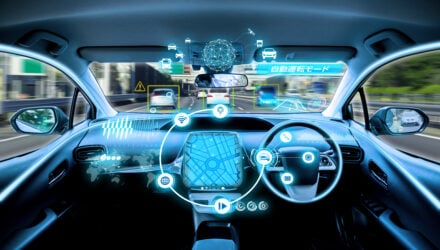
EXPERT: Sam Bisby gives his view
In our latest Expert Blog, Sam Bisby, of chooseafuelcard.com, gives his tips on managing your fleet…
The majority of businesses in the 21st century are heavily involved with transport in some way or another.
This can see a company directly entangled with the process of logistics or just have a fleet of company cars on the books; either way, there are numerous elements that can make the management of these vehicles a stressful task, but there are ways to make it easier and cheaper.
Fleet owners have found in recent years that rising costs – in fuel especially – have forced them to downsize their vehicles, especially when it comes to cars, but there are also cases that fleets with larger vehicles have been allowed to grow along with the company.
Regardless of the size of your fleet, however, managing costs is the first point of call for any efficiently run fleet.
Lease or Buy?
When planning your fleet of vehicles, the first decision to make is whether you should lease or buy your vehicles.
Buying is usually a choice least people take, and for good reason.
Buying cars mean you have to deal with depreciation, servicing and maintenance costs, as well as the hassle of having to sell the vehicle at the end of its time.
There is a definite element of flexibility to owning the cars in your fleet, but it has to be agreed that this comes with great financial comprise.
With leasing, running costs are spread evenly over the course of the deal and there’s no effect of depreciation on your books, and the dealer will usually service your vehicles as part of the agreement.
It is important to remember that when buying, depreciation hits the hardest in the first year, with cars potentially losing 50% of their value in the initial 12months of ownership.
The downside to leasing is that a deal will only allow your drivers to travel certain amount of miles, usually around 60,000miles over three years.
Any vehicle going over that limit will incur further costs.
The Economy Game
These days, with tax laws and fuel prices as they are, the type of vehicles you use for your fleet will also have a major impact on costs to your business.
More and more fleets are beginning to consider the effects of CO2 emissions and fuel economy, which means they are getting picky about which cars or vans they have within their group of vehicles.
Manufacturers are attempting to make their cars more efficient with every new model, and it is easily possible to ensure your fleet is full of cars that emit under 100g/km of CO2 – something which currently gets you emitted from congestion charges in London if you are UK based.
Fuel economy is even more essential, with manufacturers all competing against each other to give drivers the highest figure possible when it comes to miles per gallon, and there are cars out there available to give drivers a return of between 55-70mpg.
Low CO2 and high mpg numbers are obviously what you are after, but further to this, you want to be able to pay for your fuel in an efficient manner.
No business owner wants a mountain of receipts to have to trundle through on a weekly or monthly basis to work out the fuel costs from their drivers.
Most, if not all fleets take advantage of fuel cards; these allow drivers to pay for fuel easily without the need for cash or a credit card – and most advantageous of all for business owners, they get one simple invoice for each card, highlighting how much has been spent.
In the UK, there are many fuel card suppliers, with each one able to offer a suitable set-up whatever your type of business and size of fleet.
One of the biggest fuel card suppliers, Chooseafuelcard, offers a full range of fuel card options to appease any business and fleet type.
Fuel cards don’t just allow you to pay for fuel, either, as a card will open the doors to a bespoke network that gives you vital data in regulating and planning your fleet.
Not only can you see the distances and habits of your drivers, but you can also help plan your drivers’ journeys to make them the most efficient possible and put them on routes with fuel stations that accept their card.




















